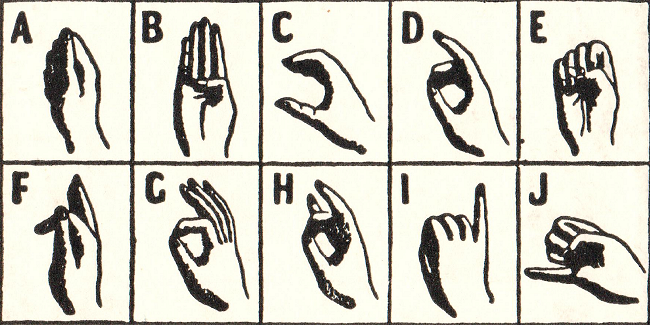 I have recently read a very interesting book about a deaf family and the Australian-Irish sign language, a one-handed system of sign language now largely superseded by Auslan. The Silent Book: A Deaf Family and the Disappearing Australian-Irish Sign Language by Bernadette T Wallis, 2016.
I have recently read a very interesting book about a deaf family and the Australian-Irish sign language, a one-handed system of sign language now largely superseded by Auslan. The Silent Book: A Deaf Family and the Disappearing Australian-Irish Sign Language by Bernadette T Wallis, 2016.
Topics covered include
- The development of schools for the deaf for Catholic youngsters.
- The arrival of Irish sign language and its gradual evolution in Australia.
- The isolation of deaf children in country Australia in the early twentieth century.
- The freedom to learn and develop that children experienced as they had a language with which to express themselves and share their lives and feelings …
The schools used the Australian-Irish sign language as the basis for teaching. This gave deaf children a freedom to communicate and express themselves, and to be able to learn, that they would not otherwise have had. They blossomed, particularly with teachers who were deaf themselves.
In 1880, in Milan, Italy, there was a famous (or infamous) international congress on deaf education where they decided to eliminate sign language for deaf children and replace it with learning to lip read and articulate words and not to sign, an approach called “oralism”. This was not implemented in the Catholic deaf schools in Australia for another sixty years.
In July 2010, a statement was issued at the 21st International Congress on Deaf Education in Vancouver, Canada regretting and rejecting the resolutions of the Milan conference in 1880. “It took almost one hundred and thirty years for this formal rejection. The Congress expressed sadness for those who suffered under the Oralism method and did not live to see it rejected.” (The Silent Book, p233)
This made me think of the rejection of systematic phonics as the basis of the initial teaching of reading. It was replaced with whole words, whole language, real books, analytical phonics and/or a combined system. This all started in about the 1960s and 70s with Smith and Goodman. The latter approach makes it very difficult for our dyslexic students to learn to read and thus be able to participate fully in education. My hope and prayer is that it will not take 130 years for this to be recognised and addressed.




{ 0 comments… add one now }